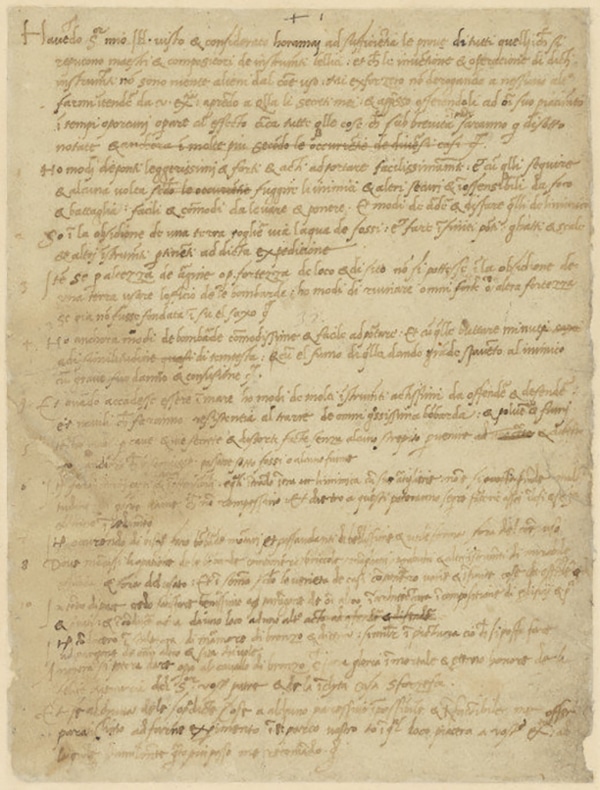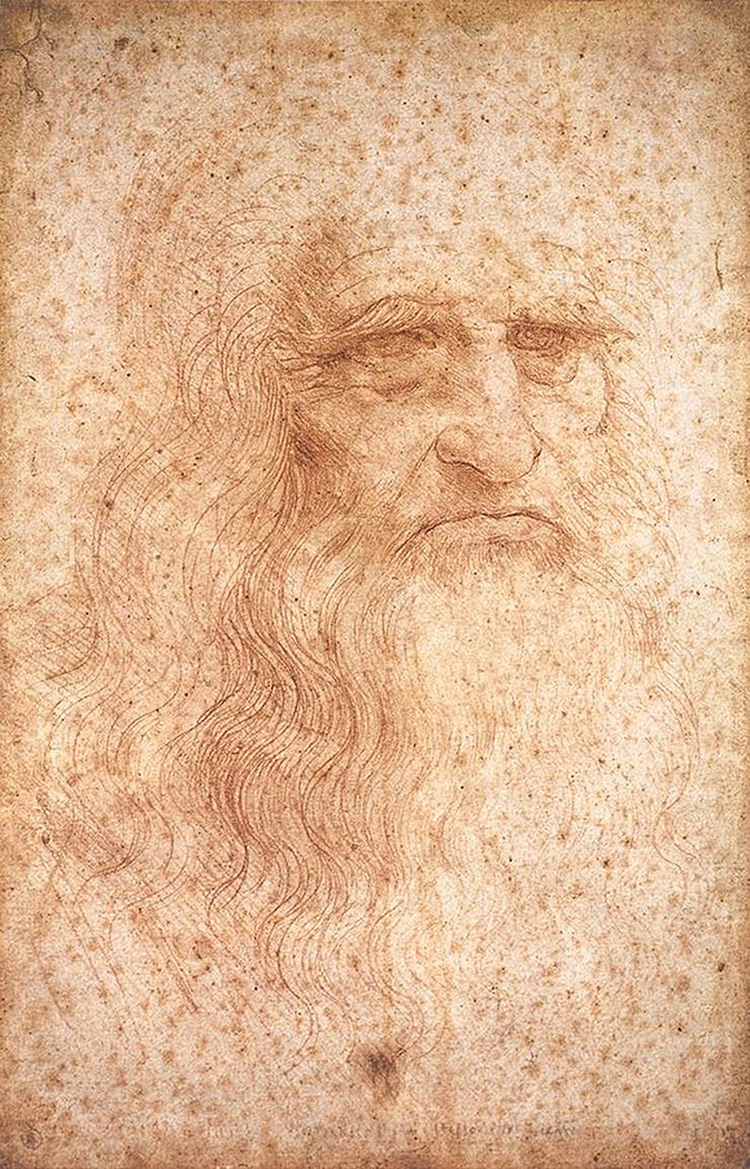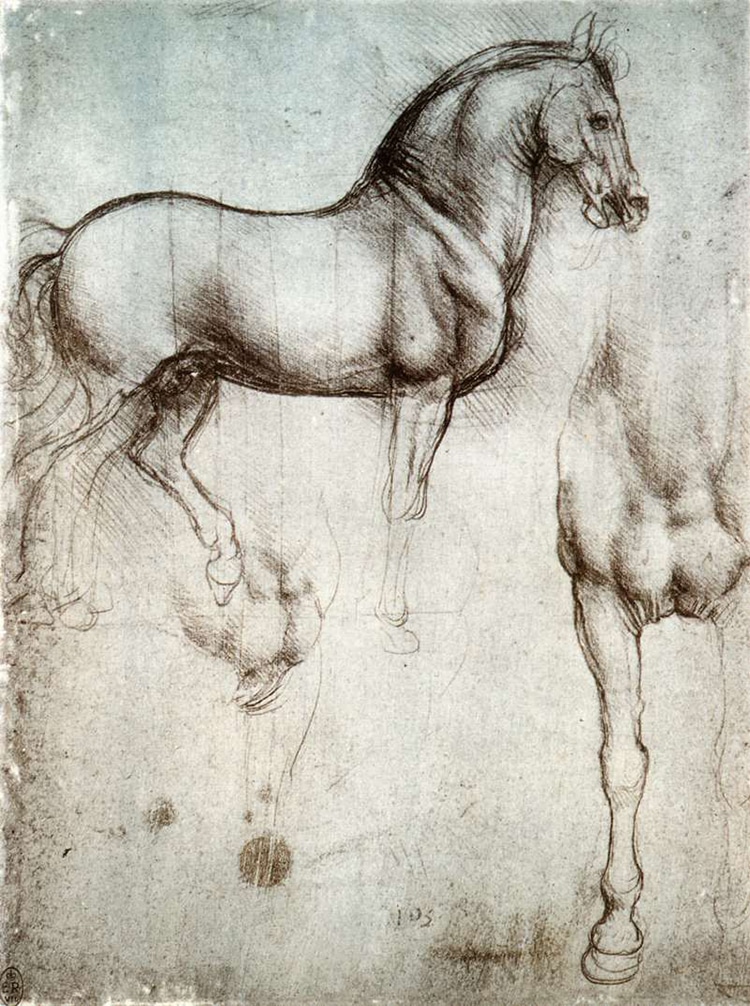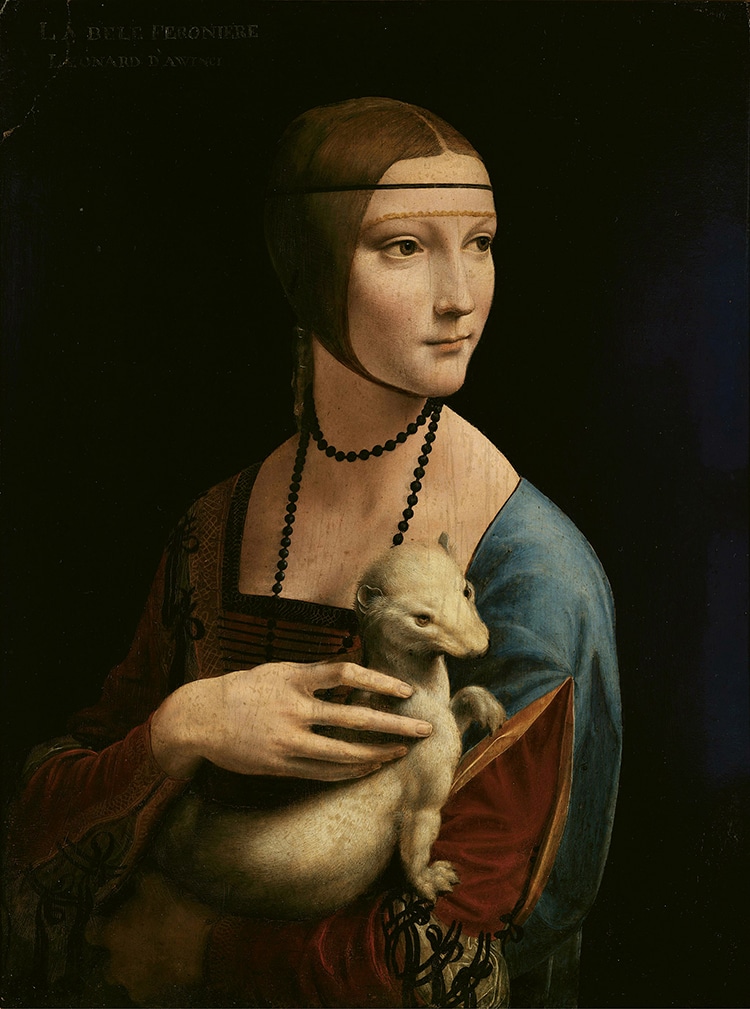
Leonardo da Vinci’s “resumé” letter to Ludovico Sforza, 1482. (Photo: Wikimedia Commons, Public domain)
Applying for jobs has always been stressful. Even Leonardo da Vinci, the Renaissance genius who was a master in everything from painting to inventing, must have felt the pressure too. Early in his career, before the Mona Lisa and The Last Supper, the legendary artist was still building his reputation. He had to seek work from the wealthy, noble patrons of Italy. His efforts left behind a fascinating letter, which can be regarded as one of the earliest extant resumés. The letter was written in 1482 to Ludovico Sforza, the future Duke of Milan, and it lists the many skills of the ingenious artist. It includes highlights appealing to the Italian nobility of the day, such as designing machines for sea battles and engineering sturdy bridges.
Da Vinci, who was born in 1452, was only thirty years old when he wrote the letter. Lacking a formal education, he taught himself Latin and math. While he is best remembered today for his paintings, his scientific writings and inventions actually occupied most of his time. His extensive notebooks are full of anatomical studies and tightly written notes. It was these studies that Da Vinci thought were most marketable to his noble clientele. One of whom was Sforza, who took the throne of Milan 12 years after the letter.
Such a nobleman could use the skills of an engineer. Da Vinci made sure that Sforza knew he had studied all sorts of structures, and was well-informed in bridge building. He offered models for inspection, and he even offered to demonstrate any of his enumerated talents at the gentleman’s earliest convenience. Most of the skills professed were in the realm of war. These included: “methods for destroying every rock or other fortress, even if it were founded on rock,” “how to dry up the water of the moats and how to construct an infinite number of bridges,” “fling small stones almost resembling a storm,” and “mak[ing] covered vehicles, safe and unassailable.” He concluded, “In short, whatever the situation, I can invent an infinite variety of machines for both attack and defense.” As an afterthought, Da Vinci also added his artistic abilities, which would of course eventually make him one of the world’s most famous artists.
You can read the full text of the resumé here.
Even Renaissance master and polymath Leonardo da Vinci had to apply for jobs with a resumé.

A presumed self-portrait of the artist circa 1512. (Photo: Wikimedia Commons, Public domain)
In 1482, he wrote a letter to Ludovico Sforza, the future Duke of Milan, and listed his many skills.

A study of horses, circa 1590. (Photo: Wikimedia Commons, Public domain)
These included: “methods for destroying every rock or other fortress, even if it were founded on rock,” and “how to dry up the water of the moats and how to construct an infinite number of bridges.”

The Lady with an Ermine (Portrait of Cecilia Gallerani), circa 1490. (Photo: Wikimedia Commons, Public domain)
h/t: [Open Culture]
Related Articles:
Painting Valued at $15K Turns Out to Be a Rembrandt, Sells for $13.8M at Auction
Secret Room of Michelangelo’s Drawings Will Open to the Public for the First Time Ever
Family Discovers Their Living Room Painting Is a Lost Masterpiece Worth Millions
